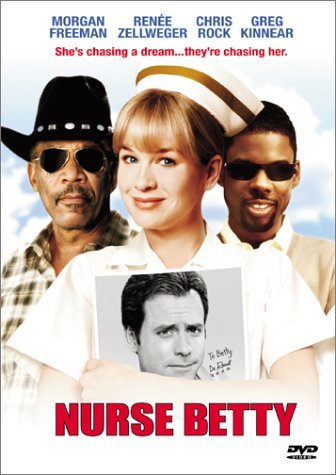The Creator as Nomadic Reader
February 12th, 2008 by Fletcher 
Our discussion of Jenkins’ definition of the ‘nomadic reader’ got me thinking. Jenkins specifically defines nomadic readers as producers that “assert their mastery over the mass-produced texts which provide the raw materials for their own productions” (23). This definition fascinated me, because it has implications for a number of published (and even critically acclaimed!) works.
Alan Moore is a well regarded writer of comic books/graphic novels; his work Watchmen was named by Time magazine as one of the 100 greatest English-language works of fiction produced since1923 (the only comic included on the list), and one of his stories was the basis for the film V for Vendetta.
One of Moore’s recent works, The League of Extraordinary Gentlemen, has given rise to two sequels and a terrible, terrible Sean Connery movie. The first volume of the series featured a number of early 20th Century pulp-fiction characters (Mr. Hyde, Captain Nemo, etc.) banding together against the Sherlock Holmes villain Moriarty. Moore expanded upon the idea with subsequent volumes, however, and eventually the series would include characters from works by Virginia Woolf, Kurt Vonnegut, H.P. Lovecraft, P.G. Wodehouse and William Shakespeare, among countless others. The books are very entertaining, both as stories and a game of ’spot-the-character’. If anyone’s interested, I found a website of dubious legality where you can download all three volumes; you’ll need a .cbr file reader, which you can easily find on Google.
Moore uses these characters, not to expand upon the original sources, but to actually develop his own unique text. I don’t think it would be helpful to get into the details of the plot, but Moore creates a remarkably coherent whole from his diverse sources. He develops a consistent fictional ‘universe’ from countless texts. As he describes in an interview:
“The planet of the imagination is as old as we are. It has been humanity’s constant companion with all of its fictional locations, like Mount Olympus and the gods, and since we first came down from the trees, basically. It seems very important, otherwise, we wouldn’t have it. Fiction is clearly one of the first things that we do when we stand upright as a species – we tell each other stories. Now, Nature doesn’t do things for decorative purposes, except like giving peacocks wonderful plumage so they can attract a mate, but since there seems to be little point to telling each other stories all the time — except there must be. We have depended upon them and to some degree the fictional world is completely intertwined and interdependent with the material world. A lot of the dreams that shape us and, presumably, our world leaders, are fictions. When we’re growing up, we perhaps base ourselves on an ideal, and even if that ideal is a real living person, there is every chance that living person may have based themselves on a fictional ideal. This is actually ground that we do cover in ‘The Black Dossier,’ and in the final soliloquy, which is delivered by Duke Prospero. We’re talking about this very thing: the interdependence between the world of fiction and the world of fact. It is something that interests me, and has come to dominate my thinking on the series. I’m not exactly sure why, but it feels as if it might be important.”
Yet however thoughtfully developed and skilfully written these stories are, its hard to categorize them as anything but fan fiction (albeit one sold through the Warner Brothers corporation and made into a multi-million dollar motion picture). Moore did not create these characters or stories, and in despite his critical acclaim as an author he is no more justified using them than a 13-year-old fan-fiction writer is. (In a poetic final twist, it seems that the terrible, terrible League film has actually managed to spawn its own fan fiction.)
I discuss Alan Moore because he’s the most obvious example of this phenomena, but there is a long, long list of published and acclaimed authors reworking other writers’ stories. Among the examples I can think of off of the top of my head are John Gardner’s Grendel, which tells the story of Beowulf from the antagonist’s perspective; March, in which Geraldine Brooks retells Little Women; and Gregory Maguire’s novels, particularly his popular Wizard-of-Oz reworking Wicked. Shakespeare borrowed from historical events and mythology in his plays. Even James Joyce’s Ulysses owes its structure and a number of its themes to Homer’s Odyssey.
My point, if I have one, is that fandom and the fannish interpretation of texts has a significant place in the development of Western culture. It is easy, and sometimes appropriate, to dismiss fan productions as wish fulfillment or escapism. But the internalization and reinterpretation of texts by other creators has produced interesting and vital work (and, in the case of Joyce and Shakespeare, sometimes outright masterpieces). More than anything else I am reminded of Hall’s explanation of the active text, by which creator and consumer exchange ideas in an endless cycle; viewed from this perspective fandom, or at least fannish engagement with text, is an inevitable and vital part of our creative culture.
Posted in Uncategorized | 2 Comments »

